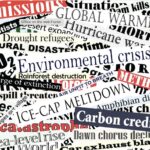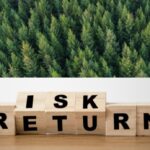Last week I had the pleasure of participating in the Corporate Investments into Forestry and Biodiversity Conference, moderating a panel on reporting – specifically as it relates to biodiversity. On the panel with me, was Aleksandra Holmlund – who is developing a pilot for biodiversity credits in Sweden, and Tuomo Kauranne of Arbonaut, a geospatial forest landscape monitoring services provider. The following article summarizes the key-takeaways from the session as well as my own reflections.

Reporting – the Photo of the Finished House
Reporting is often an arduous task. For those of us excited about getting our hands dirty with forest operations, managing forest investments, or investing into forests – the regular act of collecting data on the investments’ performance, packaging it up into a nice document package, and sending it on to investors or stakeholders might not rank as the part of our job we like best (or am I only speaking for myself). However – its importance cannot be overstated. And in the case of impact, reporting takes on a new meaning.
Reporting for financial investments is a relatively straightforward process. We have centuries of experience in crunching numbers to assess if an investment is performing well or not. However, as impact returns become increasingly important for investors, we need a similar mechanism to financial reporting to evaluate performance, to deliver those impact returns to investors. In this past article, I break down MRV (monitoring, reporting and verification) and provide some guidance for creating an Impact Report. I have also created a Guide to help you design your own SDG-aligned Theory of Change (ToC) for forest impact investments in the tropics. Designing your ToC is almost like designing the blueprints for a construction project, where photos of the finished house could be seen as the report.
Although the MRV process can by formulaic, when we dig into the details of certain impacts, such as biodiversity, it is not. There is no single metric to communicate across regions and ecosystems, though efforts are underway to simplify this.
Just 3 KPIs Please…
In the CIFB conference, when we discussed reporting for biodiversity, Aleksandra in her work to develop a biodiversity crediting mechanism for boreal forests in Sweden, discussed a conversation she had with an investment bank that has agreed to purchase these pioneering credits. They asked her what biodiversity KPIs she could report on, and she replied – about 50. The investor responded, “we want 3”! Then came the behind-the-scenes work to strip back the complexity, without diluting the importance of some 50 metrics – that are key to managing a project in order to generate high-integrity credits. Aleksandra arrived at the following metrics:
- Hectares of forest restored,
- Hectares of forest protected, and,
- Net change in biodiversity
I asked the other panellist, Tuomo of Arbonaut if he agreed, or had other thoughts on what metrics could serve as catch-all indicators for biodiversity performance, and he agreed with the hectares indicators, but provided an alternative for the third (though similar in nature), being a quantitative ecosystem index – where ecosystem conditions were given a numerical value to arrive at an overall index value. We then put the question to the audience of what others were using in practice. An interesting one that came up was bioacoustics – did you know there is a whole journal devoted to this field! Others included safeguards for tree protection, and area under improved biodiversity management. Another participant commented that we might be missing the mark in the global south – where more important impacts are commonly in the social-sphere, such as job creation. This brings to light another important element of this discussion – the disconnect between what investors want reported, and what project developers think are important to report on.
I asked the audience, specifically the investors in the audience – what biodiversity metrics they are asking their investees to report on. Crickets…
I think the non-response was an important take-away. We are all learning here, and there will need to be a bit of back and forth, from the present, where project developer-knows-best to a point in the near future where corporations and investors have mapped out their nature footprint and are committing to nature-positive claims, or to align with the Taskforce on Nature-related Financial Disclosures. When that time comes, capital providers investing into nature-positive projects will require specific metrics to be reported. But for the most-part, we are not there yet. Currently, integrity in biodiversity reporting is built through clarifying the scientific approach used, and generating simple metrics based on complex inputs.
Reporting for Management
One thing we didn’t have time to dig into was the aspect of reporting to support adaptive management. Though 50 indicators may not be useful to a large investment bank, they sure are useful for the managers implementing the activities. I believe that what gets measured gets managed. If you are only managing for an activity, for example number of trees planted – management will focus on just that. What about having those trees survive? What about those trees creating habitat for birds and mammals and encouraging a species-rich understory? What about creating high-quality sustainable wood products? I’m not saying that management requires 50 biodiversity metrics, but I do think serious consideration needs to go into breaking this down to units that will support investor requirements, as well as support management improvement – while also being practical to measure.
The Challenges with Portfolio-level Biodiversity Reporting
One thing is having several metrics to support biodiversity management. Another is having several metrics differ between projects. Let’s dissect the KPI Hectares of forest restored to understand how one metric could have different or several indicators behind it, and how this could challenge portfolio level biodiversity reporting.
What does Hectares of forest restored actually mean? To some it will mean a certain area in which interventions are carried out, where these interventions are expected to increase biodiversity. This could be area re-wetted, trees planted, seeds spread, area protected from encroachment. To others it will mean the area in which interventions have generated measurable biodiversity enhancement, such as increased bird species diversity in the area. To others still, it will mean a cumulative area of intact forest, whereby intact forest “islands” are connected by restoring degraded forest areas between them. On a project level, as long as a consistent scientific approach is applied, and it is compared to a properly measured baseline condition – adhering to one definition of Hectares of forest restored over another is not a problem. Where this becomes complicated is at the program or portfolio level. Where a capital provider may have several projects that look at different definitions and approaches to arriving at Hectares of forest restored. I would urge capital providers who manage a portfolio of different nature-based solutions projects to ask the project developers what their reporting metrics are calculated from, so that capital providers, in-turn can provide credible results to their shareholders and stakeholders.
Struggling with Impact Reporting?
Are you struggling with how to streamline your impact reporting? What are the most relevant indicators to measure across different impact themes? Please reach out if you’d like to explore how your unique forest impact investment strategy can capture and communicate impact results credibly.




